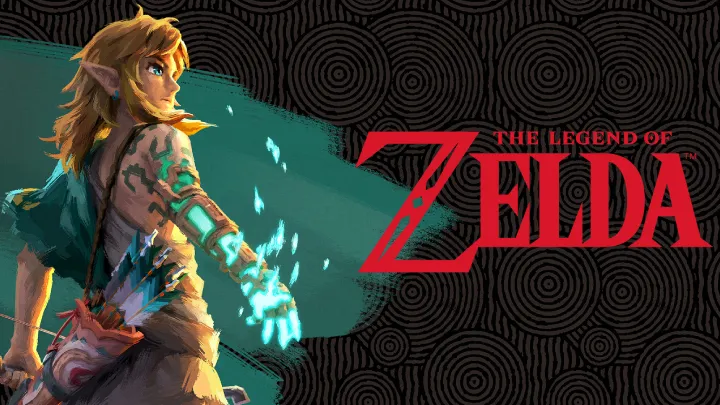Introduction
In the early days of gaming, players were thrilled by blocky sprites hopping across monochrome screens. Fast forward to today, and we wander through vast, photorealistic worlds lit by dynamic sunlight and swaying trees. The visual journey of video games has been one of the most rapid and breathtaking evolutions in modern technology.
This article takes you on a deep dive into that journey — from the pixelated simplicity of the 1970s and 80s, through the explosion of 3D worlds in the 90s, to the cinematic realism and ray tracing of the 2020s. We’ll examine the key milestones, the technology behind the transformation, the artistry of visual design, and the cultural impact of this evolution.
The evolution of graphics is not just a story of pixels — it’s a story of how we experience worlds, feel emotions, and connect with characters. Let’s explore how games grew from dots to dreams.
The Dawn of Pixels: 1970s–1980s

When Simplicity Ruled the Screen
In the 1970s, video games were a new frontier. Titles like Pong (1972) and Space Invaders (1978) offered basic shapes — paddles, dots, and lines — but to the audience of the time, they were magical. These games relied on the imagination of the player. A square could be a spaceship. A line could be a laser beam.
The hardware of the era — like the Atari 2600 — was severely limited. Developers had only a handful of colors and pixels to work with. The 8-bit era began to bloom in the early 1980s with consoles like the Nintendo Entertainment System (NES), which brought iconic characters like Mario, Link, and Samus to life using sprites that were no more than 16×16 pixels.
Art Through Restriction
These constraints bred creativity. Developers used clever palette tricks, animations, and tile-based design to give players a sense of depth and emotion. The pixel art of games like The Legend of Zelda and Metroid became timeless. Even today, modern indie games use pixel art not out of necessity, but as an aesthetic choice, proving the enduring power of this visual language.
The 16-Bit Renaissance: Late 1980s–Mid 1990s
More Colors, More Character
The arrival of 16-bit consoles like the Super Nintendo Entertainment System (SNES) and the Sega Genesis marked a leap forward. Suddenly, developers had more colors, more memory, and more expressive sprites. Backgrounds gained depth. Characters gained facial expressions. Animations became smoother.
Games like Chrono Trigger, Super Metroid, and Sonic the Hedgehog showcased how much could be achieved with well-crafted 2D art. These games didn’t strive for realism — they embraced stylization, giving each title a unique identity.
Mode 7 and Parallax Scrolling
New techniques like parallax scrolling (where background layers move at different speeds) and Mode 7 graphics (rotating and scaling backgrounds) created illusions of depth and movement. This gave players the first taste of “3D-like” environments, even though the games were still fundamentally 2D.
The Leap to 3D: Mid 1990s–Early 2000s

Enter the Third Dimension
The mid-1990s brought a seismic shift: true 3D graphics. Consoles like the Sony PlayStation, Nintendo 64, and Sega Saturn enabled developers to render polygons in real time. Games like Super Mario 64 (1996) and Tomb Raider (1996) offered free camera movement, open 3D spaces, and character models made of triangles instead of tiles.
This leap came with growing pains. Early 3D models were jagged, textures were blurry, and cameras were clunky. But the sense of immersion was unlike anything players had experienced before.
New Challenges, New Possibilities
3D required a new approach to design. Lighting, perspective, animation, and collision all became more complex. Developers had to think like filmmakers and architects. Suddenly, games were not just about gameplay — they were about staging, composition, and cinematic feel.
The Age of Realism: Mid 2000s–2010s
High-Definition Revolution
The introduction of high-definition consoles like the Xbox 360 and PlayStation 3 around 2005 marked another leap. Textures became sharper. Models had more polygons. Lighting systems improved dramatically. Motion capture became standard for animating characters.
Games like Uncharted, Assassin’s Creed, and The Last of Us pushed for cinematic realism. Developers worked with Hollywood actors, recorded lifelike facial expressions, and invested in advanced shaders and physics.
The Rise of Engines
Game engines like Unreal Engine and Unity became the backbone of the industry. These tools standardized high-end graphics, allowing developers to create visually stunning worlds without building everything from scratch. This democratized development and gave rise to indie studios with AAA-quality visuals.
Artistic Identity in the HD Era
Realism vs. Stylization
Not every game chased realism. Titles like Journey, Okami, and Cel-Shaded masterpieces like The Legend of Zelda: Wind Waker proved that visual beauty isn’t tied to realism. Instead, they embraced unique art styles — watercolor brushstrokes, minimalism, surreal landscapes — showing that emotion and beauty come in many forms.
The Role of Lighting and Atmosphere
Dynamic lighting, volumetric fog, and real-time shadows became tools for mood and storytelling. Games like Inside or Limbo used lighting as a narrative device. Atmosphere became as important as character models.
The Modern Marvel: Ray Tracing and Photorealism
What Is Ray Tracing?
By the late 2010s and early 2020s, new GPUs introduced real-time ray tracing — a rendering technique that simulates how light behaves in the real world. This allowed games to reflect light, bounce it off surfaces, and cast realistic shadows dynamically.
Games like Cyberpunk 2077, Control, and Metro Exodus showcased environments that looked eerily lifelike. Ray tracing brought glass, water, metal, and even skin to new levels of believability.
AI Upscaling and DLSS
NVIDIA’s DLSS (Deep Learning Super Sampling) and AMD’s FSR used AI to upscale images in real time, boosting performance without sacrificing image quality. These technologies allow 4K gaming without needing raw brute force, enabling more players to access high-end visuals.
Immersion Beyond Graphics
Haptics, Sound, and Frame Rate
Graphics are only part of immersion. Modern games integrate high frame rates (60fps or 120fps), spatial audio, and haptic feedback to deepen the experience. When visuals, sound, and touch all work together, the line between player and world blurs.
VR and AR Visuals
Virtual reality pushes graphical immersion further by placing players inside the world. This brings new challenges — like maintaining high fidelity while rendering two perspectives at once — but also new possibilities for empathy, embodiment, and exploration.
The Cultural Impact of Visual Evolution
Nostalgia and the Pixel Revival
Ironically, as graphics became more realistic, many players returned to the charm of pixel art. Indie titles like Stardew Valley, Celeste, and Undertale proved that emotional depth doesn’t require photorealism. Retro aesthetics carry nostalgia, clarity, and artistry.
Visual Identity as Brand
Franchises like Zelda, Final Fantasy, and Halo are instantly recognizable not just by gameplay, but by visual language — color palettes, character silhouettes, iconography. Graphics are not just technical; they’re cultural symbols.
The Future of Game Graphics
Procedural Generation and Infinite Worlds
Future games may use procedural generation to build vast, photorealistic environments in real time. Combined with AI art tools, this may allow for worlds that are truly infinite, unique to each player.
Ethical Considerations
As characters become hyper-realistic, ethical questions arise: What does it mean to depict violence with lifelike faces? How do we represent identity responsibly? What is the role of diversity in visual design?
Conclusion
The evolution of video game graphics is a story of ambition, artistry, and innovation. From humble pixels to breathtaking realism, each era brought new tools and new visions. But at its core, the purpose of game graphics has remained the same: to immerse, to tell stories, and to invite players into new worlds.
Whether we’re gazing at a photorealistic skyline or a pixelated sunset, the magic of video games lies not in how real they look — but in how deeply they make us feel.

















